A simple, but yet frequent statistics is a histogram of derived entity, and if I understand the official QlikSense documentation right that seems not working out of the box:
You cannot use a master dimension that was created using the expression editor, even if the resulting field is numeric. The dimension cannot be based on an aggregation function.
Assume I have some mockup-data of basic user data looking like this:
id first_name last_name gender date_added nickname
1 Marthe Salzburg Female 2018-03-27 msalzburg0
2 Larine Camm Female 2018-05-13 lcamm1
3 Leanor MacIan 2018-05-13 lmacian2
4 Shawnee Baudain Female 2018-01-08 sbaudain3
5 Mable Sitlinton Female 2018-03-27 msitlinton4
6 Jilleen Wadesworth Female 2018-04-12 jwadesworth5
7 Mace Lube Male 2018-11-18 mlube6
Plotting how many user registered each day is easy: Add a new bar plot to your QlikView sheet, choose date_added as dimension and Count([date_added.autoCalendar.Date]) as measure, et volià:

The next logical question to ask is: On how many days have been x users added? The answer I expect from the mock data above would be something like:
added_per_day occurences
2 2
1 3
0 309 # (number of days between 2018-01-08 and 2018-11-18) - 5
My question: How do I do generate such a histogram with QlikSense?
As mentioned in answer to a different question, my challenge is that the active QlikSense community seems to be rather small, that why I am asking here. I am new to the software, I am rather used to the command-line approach.